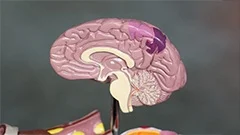Introduction
The study of chemistry is fundamental to understanding the behavior and properties of matter, including living organisms. One crucial aspect of chemistry that plays a vital role in biology is the chemical bond, which refers to the attractive force between atoms or ions that holds them together to form molecules or crystals. This course aims to provide an in-depth exploration of various types of chemical bonds and their significance in biological systems.
Definition and Importance of Chemical Bonds
Chemical bonds are the primary means by which atoms share or transfer electrons, leading to the formation of molecules with distinct properties compared to individual atoms. The strength and type of a chemical bond determine the stability, reactivity, and structure of a molecule, as well as its role within a biological context.
Covalent Bonds
Formation and Properties of Covalent Bonds
Covalent bonds are formed when two atoms share one or more pairs of electrons. These bonds are characterized by equal sharing of electrons between atoms, leading to stable molecules. The strength of covalent bonds depends on factors such as the electronegativity of the bonded atoms, the number of shared electron pairs, and the spatial arrangement of the atoms involved.
Examples of Covalent Bonds in Biology
Covalent bonds play essential roles in various biological molecules, including:
- DNA: The double helix structure of DNA is stabilized by numerous covalent bonds between phosphate and deoxyribose groups, as well as between base pairs (A-T and C-G).
- Proteins: Amino acid residues within proteins are connected through peptide bonds, which are covalent bonds formed between the carboxyl group of one amino acid and the amino group of another.
- Lipids: The long alkane chains that make up lipid molecules, such as phospholipids, are held together by covalent bonds.
Ionic Bonds
Formation and Properties of Ionic Bonds
Ionic bonds occur when an atom loses one or more electrons to form a cation (positive ion), while another atom gains these electrons to form an anion (negative ion). The resulting ions are attracted to each other due to opposite charges, forming a stable crystalline lattice.
Examples of Ionic Bonds in Biology
Ionic bonds are less common in biological systems compared to covalent bonds but still play important roles:
- Salts: Many essential compounds for life, such as sodium chloride (table salt), are held together by ionic bonds. These compounds often serve as electrolytes and participate in vital cellular processes like nerve conduction and muscle contraction.
- Mineralization of bone: The calcium phosphate salts found in bone tissue, such as hydroxyapatite, form through a process involving both ionic and covalent bonds. These minerals provide structural support and strength to the skeletal system.
- Interactions between biomolecules: Ionic interactions can occur between charged functional groups on macromolecules, like amino acid residues on proteins or phosphate groups on nucleotides in DNA. These interactions influence molecular recognition, binding affinity, and overall function of the biomolecule.
Hydrogen Bonds
Formation and Properties of Hydrogen Bonds
Hydrogen bonds are weak intermolecular forces that arise when a hydrogen atom covalently bonded to an electronegative atom (such as oxygen, nitrogen, or fluorine) is partially attracted to another electronegative atom in close proximity. Hydrogen bonds contribute to the stability and organization of molecules and crystal structures.
Examples of Hydrogen Bonds in Biology
Hydrogen bonds play crucial roles in various biological systems:
- DNA structure: The hydrogen bonding between base pairs (A-T and C-G) along the double helix provides stability to the DNA molecule while allowing for genetic information transfer during replication and transcription.
- Protein folding: Hydrogen bonds help determine the three-dimensional conformation of proteins by stabilizing specific interactions between amino acid residues, leading to proper protein function.
- Lipid membrane organization: Hydrogen bonding between water molecules on the hydrophilic headgroups of phospholipids can influence the curvature and stability of cell membranes.
Conclusion
The chemical bond is a fundamental concept in chemistry that underlies the structure, function, and behavior of all matter, including living organisms. Understanding the various types of chemical bonds—covalent, ionic, and hydrogen—and their roles within biological systems enables us to appreciate the complex intricacies of life at the molecular level.
MCQ: Test your knowledge!
Do you think you know everything about this course? Don't fall into the traps, train with MCQs! eBiologie has hundreds of questions to help you master this subject.
These courses might interest you
Create a free account to receive courses, MCQs, and advice to succeed in your studies!
eBiologie offers several eBooks containing MCQ series (5 booklets available free for each subscriber).



